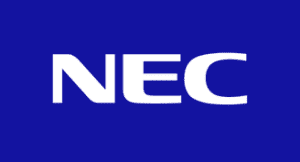Industry cool on new NFV group, intentions unclear
Telco Systems, a traditional carrier Ethernet vendor, has announced the formation of the Open Edge Alliance (OEA), a vendor programme specifically targeting the deployment of network functions virtualization and software defined networking at the network edge. The partnership programme has initially received a pretty cool reaction from various members of the NFV community, sources have indicated.
March 12, 2015
.jpg?width=1280&auto=webp&quality=95&format=jpg&disable=upscale)
Telco Systems, a traditional carrier Ethernet vendor, has announced the formation of the Open Edge Alliance (OEA), a vendor programme specifically targeting the deployment of network functions virtualization and software defined networking at the network edge. The partnership programme has initially received a cool reaction from various members of the NFV community.
The OEA, a statement from Telco Systems said, will deliver significant benefit to its members, who can develop apps which integrate into Telco Systems’ network-edge solutions. The firm reckons the partnership programme would be particularly attractive to small innovators and start-ups, with “minimal investment in the process” required. Subsequently, it appears that network applications would become part of a catalogue of services which can be utilised as necessary via a distributed NFV architecture.
Elsewhere in Telco Systems’ product suite is the Open Metro Edge, an amalgamation of SDN, NFV and Cloud-based services including CloudMetro, a distributed NFV demarcation and aggregation product family, and TelcoApps which is a suite of software products that run over CloudMetro and other third party equipment.
It would appear the Open Edge Alliance is a means of boosting the service offerings of CloudMetro and TelcoApps within the Open Metro Edge product suite. At the time of writing, Telco Systems is yet to respond to telecoms.com’s request for comment on the primary purpose and ambitions for the alliance.
Meanwhile, the alliance’s move towards running NFV and SDN-based application distribution architectures near the network and mobile edge remains ambiguous with its intentions, and could be seen either as aligning or competing with the Mobile Edge Computing group, being run at ETSI. The ETSI group is a combined effort from some leading infrastructure vendors and telcos, such as Intel, Nokia Networks, Vodafone and Huawei, to store content nearer the network edge, thus increasing efficiencies in content and application delivery time and reducing bottlenecks linking backhaul to the core network.
When asked to share opinion on whether the OEA could be considered a competitor to the work being done at both ETSI working groups (the NFV ISG and the MEC), an ETSI spokesperson said “ETSI has no opinion on this to date,” which could suggest the standards body is still investigating the alliance’s relevance to the industry, and to the work being done across more than one of its specification groups.
Telecoms.com sources close to the ETSI NFV community appear to be cool on the alliance, potentially due to the lack of clarity of its intentions, and the notion of another vendor-led industry partnership programme. The number of vendor-led NFV ecosystem partnerships emerging is leading to an increasingly noisy field, with Alcatel-Lucent and Intel leading two of the largest ecosystems in existence, and so it is understandable why some quarters may consider this to be another also-ran.
Telecoms.com’s news coverage is sponsored by NEC.

NEC brings together and integrates technology and expertise to create the ICT-enabled society of tomorrow. We collaborate closely with partners and customers around the world, orchestrating each project to ensure all its parts are fine-tuned to local needs. Every day, our innovative solutions for society contribute to greater safety, security, efficiency and equality, and enable people to live brighter lives. Read more…

About the Author
You May Also Like


.png?width=300&auto=webp&quality=80&disable=upscale)







.png?width=300&auto=webp&quality=80&disable=upscale)


_1.jpg?width=300&auto=webp&quality=80&disable=upscale)